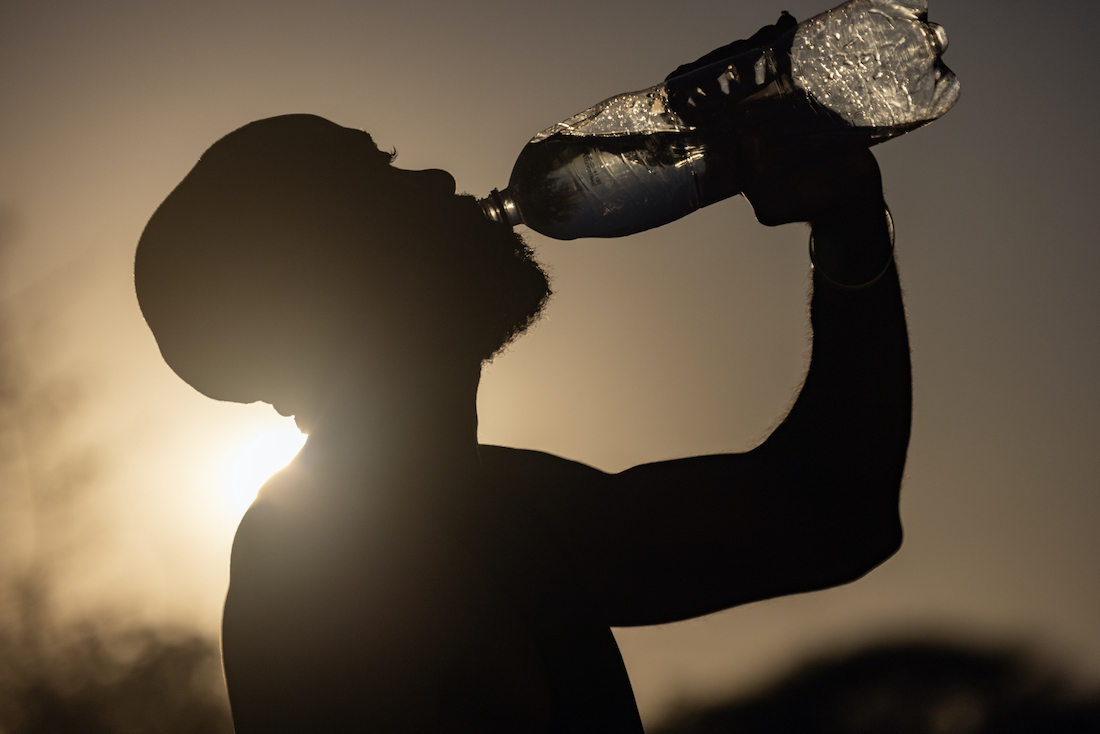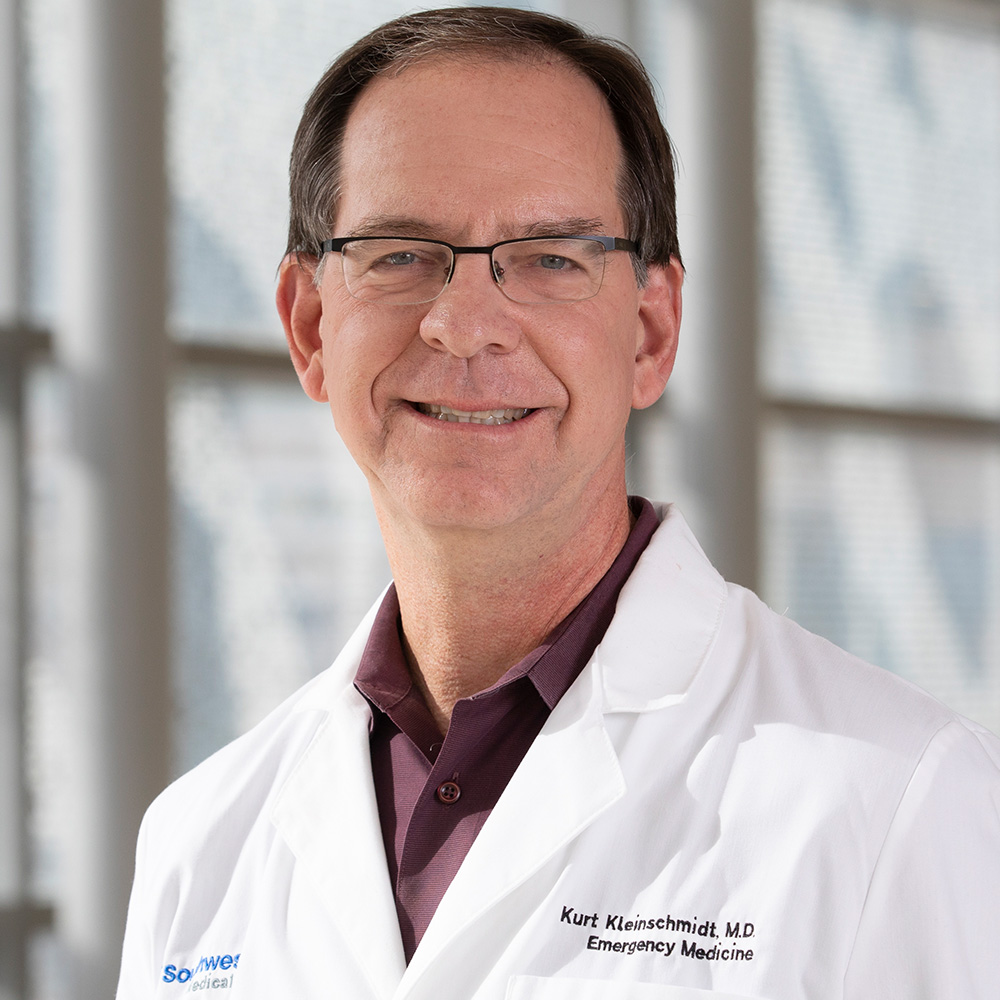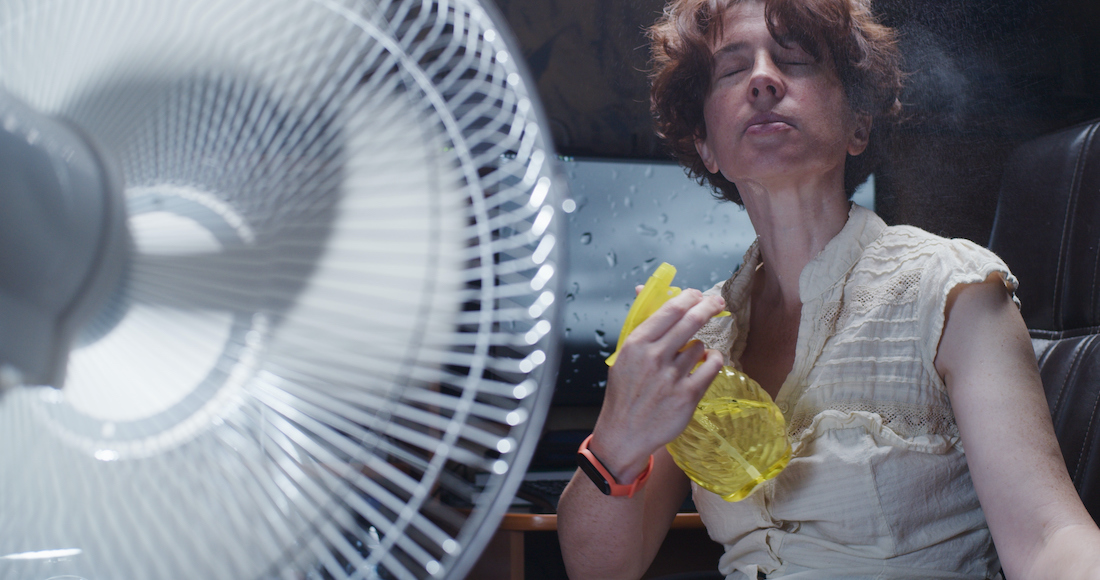Take summer heat health risks seriously, UTSW experts caution
Severe effects on internal organs, heat stroke among potential dangers

DALLAS – July 05, 2024 – The scorching heat can be inescapable this time of year, and as temperatures hover around triple digits, experts at UT Southwestern Medical Center caution that uncomfortable weather can escalate to dangerous health conditions.

Extreme heat typically refers to temperatures above 90 degrees and high humidity. Although this might seem like the norm in some regions, prolonged exposure can have dire health consequences. In fact, the U.S. Environmental Protection Agency calls heat “the leading weather-related killer” in the country.
“Humidity can make the situation worse,” says Craig Crandall, Ph.D., Professor of Internal Medicine in the Division of Cardiology at UT Southwestern. “What keeps us cool is sweat evaporating from our skin. When the weather is too humid, sweat does not evaporate as effectively, so with the excess sweating, you’re essentially just dehydrating yourself.”
How heat affects vital organs
The environment can wreak havoc on the body’s internal systems. Whether we realize it or not, heat waves can be powerful enough to impair bodily functions and, in a worst-case scenario, cause organ failure.
“It is hard to think of an organ that is not affected by the heat,” Dr. Crandall says.

Here’s a closer look at how heat impacts the body:
- Heart – During heat stress, blood rushes to the skin to release body heat. The heart must work harder to pump blood, which can be especially harmful for people with cardiovascular disease.
- Blood flow – Some blood vessels will constrict, and as blood is diverted to the skin, vital organs could be starved of oxygen supply. “There have been cases where we see an ischemic reaction, which means an inadequate blood flow to the liver or kidneys that can affect their function,” Dr. Crandall says.
- Gut – The intestinal tract becomes more permeable as the body overheats, allowing potentially harmful substances like toxins to enter the bloodstream.
- Muscles – When people overexert in extreme heat, they may strain their muscles and develop cramps. In severe cases, a muscle may even break down — a condition known as rhabdomyolysis. “As muscle tissue dies, it releases electrolytes and proteins into the bloodstream, which, in high amounts, can lead to heart arrythmias and kidney injuries,” says Jay Pandya, M.D., Assistant Instructor of Emergency Medicine at UTSW. “One may experience muscle pain or weakness and a dark-colored urine. In mild cases, it can be treated with IV hydration and observation. If it is severe, you might need to be monitored at a hospital.”
- Kidneys – Dehydration and impeded blood flow can impair kidney function. Patients who have renal disease face a greater risk when exposed to extreme heat.
- Lungs – When people become overheated, they tend to breathe harder, and a greater demand is placed on the lungs. Hot and humid air also can trigger or exacerbate asthma symptoms.
Heat exhaustion vs. heat stroke
In the summer of 2023, the hottest on record in the U.S., the Centers for Disease Control and Prevention (CDC) reported nearly 120,000 emergency department visits related to heat illness. The number of heat-related deaths has jumped over the last three years from 1,602 in 2021 to 2,302 in 2023, according to the U.S. Department of Health and Human Services. Two of the biggest concerns are heat exhaustion and heat stroke.

“Heat exhaustion is not likely to inflict significant damage if addressed early, and you will recover at home with cooling, time, rest, and water,” says Kurt Kleinschmidt, M.D., Professor of Emergency Medicine at UT Southwestern. “In contrast, heat stroke is far more dangerous. By then, your body temperature has risen so much that organs, such as the brain, are shutting down. If not recognized early, heat exhaustion can progress to heat stroke.”
Common symptoms of heat exhaustion:
- Headache or dizziness
- Nausea
- Weakness
- Irritability
- Heavy sweating
- Elevated body temperature
- Decreased urination and thirst
Besides highly elevated body temperature, major signs of heat stroke are neurologic:
- Confusion/Delirium
- Agitation
- Slurred or nonsensical speech
- Seizures

When to call 911
A heat stroke differs from a typical stroke, the latter of which occurs when blood flow to the brain is disrupted by a blockage or ruptured blood vessel. But one telltale sign they share is the onset of neurological symptoms.
“One of the clearest indicators of heat stroke is a person’s mental status,” Dr. Pandya says.
There’s no official body temperature that denotes heat stroke, but the higher it climbs, the greater the cause for concern. It is widely considered life-threatening when a person’s temperature reaches 104 degrees.
Recognizing the symptoms of heat stroke could mean the difference between life and death. And as in any emergency, expediency is key.
“The goal is to cool the body as fast as possible,” Dr. Kleinschmidt says. “This means immediately after you notice neurological changes, such as sudden odd behaviors or confusing speech.”
Some people face a greater risk

Certain populations are more vulnerable to extreme heat, including older adults, children, and pregnant individuals. Seniors who are 65 or older are more likely to find their health compromised by chronic conditions, such as kidney or cardiovascular disease, or other age-related complications.
“It is partly because of a reduced sweating function,” Dr. Crandall says. “As we get older, we don't sweat as well.”
On the other end of the age spectrum, it’s believed children are also less efficient at regulating their body temperature. Behavioral differences may play a role as children tend to spend more time in outdoor activities and are less likely to recognize the symptoms of heat illness.
Another high-risk group is those who are expecting. Pregnancy changes blood flow and metabolic needs, making people more sensitive to heat as their bodies work harder to accommodate the baby and themselves.
Certain medications might also interfere with the body’s thermoregulatory process. Classes of drugs known as anticholinergics, which treat a range of conditions, can suppress sweating. Diphenhydramine (Benadryl), an over-the-counter medicine commonly taken for allergy symptoms, is an anticholinergic that makes it harder to sweat, Dr. Kleinschmidt explains.
Other drugs that are commonly used to treat hypertension can lower blood pressure or have a diuretic effect. If you’re not staying cool and appropriately hydrated, these medications can exacerbate the effect of the heat with dizziness and dehydration, Dr. Pandya adds.
“And some people take multiple medications,” he says. “This does not mean you should stop taking them. But it is worth a conversation with your primary care physician if you are concerned.”
How to stay safe in the heat
While the weather is out of our control, we can take preventive measures to protect ourselves during the summer. Here are some tips from the experts at UTSW:
- Stay hydrated – The body needs water to function properly, so it’s recommended to have a bottle of water on hand when venturing outside during the summer. “Athletes and other people who expend a lot of energy for long periods may benefit from drinks with added electrolytes,” Dr. Crandall says, “but water on its own is sufficient for the average person exercising for an hour or so.”
- Take breaks – The brain will signal when it is in distress. When you begin to feel fatigued, dizzy, or overheated while working outside, go indoors to rest. Take advantage of shaded areas and drink plenty of water.
- Dress appropriately – Wear clothes made of lightweight fabric. “The idea is to choose clothes that are conducive to sweating,” Dr. Kleinschmidt says.
- Monitor the heat index – Sometimes the best solution is the simplest. Stay indoors during the hottest time of the day and when there’s a heat advisory. Make sure your air conditioning system is working properly and know where you can find a cooling center in case of emergency.
- Use wet cloths – One method of cooling down is to wipe your skin with a wet cloth. In some cases, this is a better option than fans. “A fan may be useful, especially when you’re sweating, but once the temperature approaches 100 degrees, we have data that suggests it could do more harm than good, particularly to older adults,” Dr. Crandall says. “That intense heat is then directed at you, and at that point, the situation becomes similar to what happens inside a convection oven.”
- Ease into summer – Allow yourself time to acclimate to the heat. The more time you spend outside during the summer, the more bearable the heat becomes as your body adapts.
- Check on each other – Although most cases of heat-related deaths are preventable, the biggest threat is a lack of access to air conditioning, which primarily affects people who are homeless or living in a low-income household. To address this issue, many local agencies – including the City of Dallas Office of Homeless Solutions – offer temporary cooling stations when heat advisories are in effect. More information about resources can be found on the city’s website. It’s also recommended that families check on older relatives who live on their own. “Heat illness is a public health issue that takes eyes on the ground and education,” Dr. Pandya says.
About UT Southwestern Medical Center
UT Southwestern, one of the nation’s premier academic medical centers, integrates pioneering biomedical research with exceptional clinical care and education. The institution’s faculty members have received six Nobel Prizes and include 25 members of the National Academy of Sciences, 21 members of the National Academy of Medicine, and 13 Howard Hughes Medical Institute Investigators. The full-time faculty of more than 3,100 is responsible for groundbreaking medical advances and is committed to translating science-driven research quickly to new clinical treatments. UT Southwestern physicians provide care in more than 80 specialties to more than 120,000 hospitalized patients, more than 360,000 emergency room cases, and oversee nearly 5 million outpatient visits a year.
